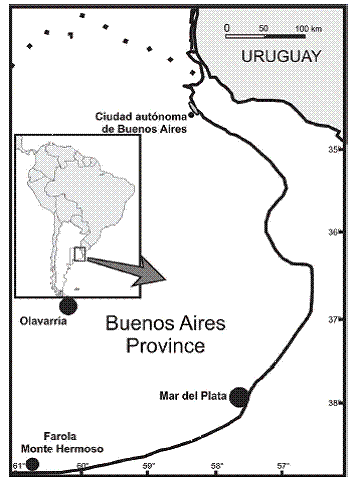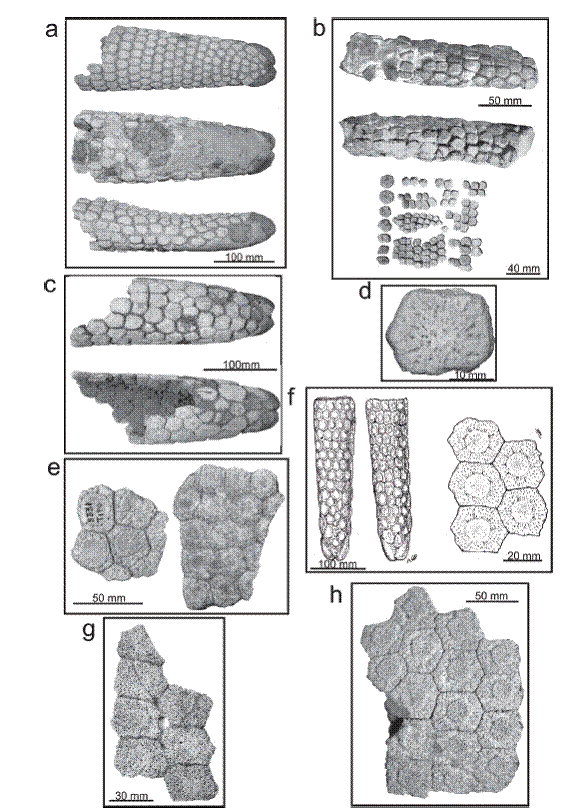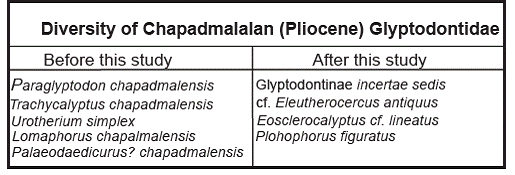ABSTRACT
A large diversity of Glyptodontidae has been proposed as characterizing the Chapadmalalan Age (Pliocene). Most of these taxa were recognized on the basis of partial dorsal carapaces and/or caudal tubes, whereas the main diagnostic characteristic is a particular morphology of the exposed surface of the osteoderms. From a biostratigraphic point of view some species are biostratigraphically important. The Upper Chapadmalalan is based on the Paraglyptodon chapadmalensis biozone. Both the re-evaluation of the type and referred materials and new significant findings from the Chapadmalal and El Polvorín Formations indicate that the diversity of Pliocene Glyptodontidae is more limited than previously supposed. The particular morphology of the exposed surface of the osteoderms that characterizes some of the species actually corresponds to a taphonomic alteration, which results in a non-real ornamentation pattern. Thus, the Glyptodontinae P. chapadmalensis must be replaced as a fossil guide because neither this species nor the species included in the genera Urotherium, Trachycalyptus and Lomaphorus are well characterized. Taking into account the diversity of Glyptodontidae for this lapse, the Glyptodontinae are very scarce (a situation that contrasts with its records in the Pleistocene), whereas Eosclerocalyptus, "Plohophorini" (Plohophorus) and Doedicurinae (cf. Eleutherocercus antiquus) are among the most recorded taxa.
Key words:
Diversity; Glyptodonts; Osteoderms; Pliocene; Southern South America

 Thumbnail
Thumbnail
 Thumbnail
Thumbnail
 Thumbnail
Thumbnail
 Thumbnail
Thumbnail
 Thumbnail
Thumbnail





